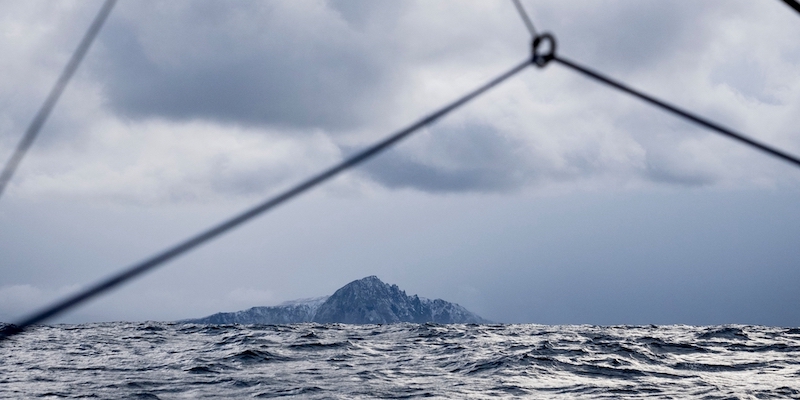Almost a month after they last set foot on land, all the crews of the four sailboats still competing in the Ocean Race have passed Cape Horn, the most famous and treacherous point of its third stage, the most long ever.
The stage began on February 26 from Cape Town, in South Africa (with a modified departure due to the sighting of some whales) and will end in a few days in Itajaì, in Brazil: in between there are over 23,000 kilometers of navigation to the east ; passing Cape Leeuwin in South Australia; weeks of sailing in cold and treacherous waters; passing by Point Nemo, the furthest point in the world from any land coast; and the crossing of Cape Horn, in the extreme south of South America, which acts as a symbol watershed between the Pacific Ocean and the Atlantic Ocean, with all that entails for boats to leave one and enter the other.
(Amory Ross/11th Hour Racing/The Ocean Race)
At the moment, with more than 20,000 kilometers behind us and a couple of thousand still to go, it looks like it will be a challenge to win the stage hull to hull between the German boat of Team Malizia and the Swiss Holcim-PRB, passing by Cape Horn about an hour away. But the Ocean Race is a round-the-world regatta with monohull boats that they travel over 1,000 kilometers in 24 hours, with speed records that have been set and broken many times over the past few days; a regatta in which at the end of the second stage the boats had arrived, after days, with a few minutes difference from each other: really anything can still happen before the final arrival, scheduled for June, in Genoa.
This year’s Ocean Race – the fourteenth in history, fifty years after the first, and the first since the start of the pandemic – started in January from Alicante, on Spain’s Mediterranean coast. It descended towards Cape Verde, the island state off the coast of Senegal, and then further south to South Africa. After this third stage, which has seen the crossing of three quarters of the south of the planet, the boats will go as far as Newport, in the United States, and then from there to Denmark before returning to the Mediterranean.
The competing boats are IMOCA 6o. “IMOCA” is the acronym for International Monohull Open Classes Association and “60” is the length in feet, equal to just over 18 metres. They are foiling boats because they have two foils or “mobile wings”, which under certain conditions allow the hull to be lifted into the air and therefore reduce friction with the water.
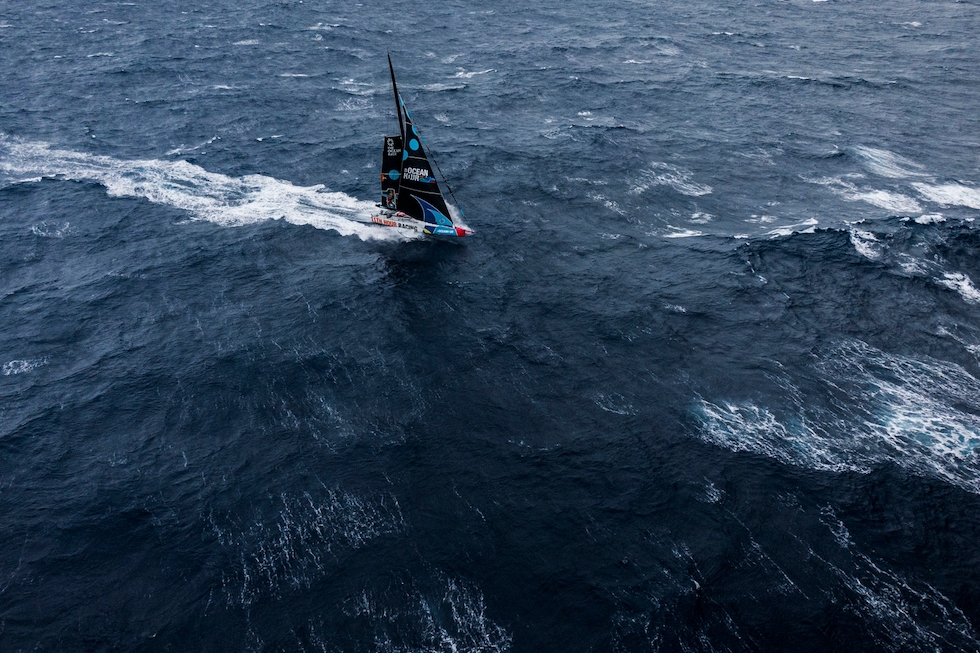
(Amory Ross/11th Hour Racing/The Ocean Race)
There were five boats at the start in this category, but four will arrive in Brazil because one withdrew. There are five people on each boat, who make a very difficult life for weeks. We sleep little (often less than a couple of hours per shift) and rather poorly. You work a lot, you eat dehydrated food (there is no kitchen and you need to save overall weight) and for what you usually use a toilet for, you make do with a bucket. For the level of general isolation – and often physical distance – from other human beings, as well as for the narrowness of spaces, the crews of the Ocean Race are often compared to those of the International Space Station.
The classification of the Ocean Race is by points, not by time. For now Holcim-PRB is first with 15 points, followed by 11th Hour Racing Team at 10, Malizia at 9 and Biotherm at 8. Each stage assigns 5 points to the first, 4 to the second and so on. Given the length and the adversities, the third stage also had an intermediate finish near Tasmania.
For boats, the last few days before Cape Horn were marked by strong gale force winds with gusts exceeding 80 kilometers per hour and waves up to 8 meters high, and with places where the water temperature even reached below freezing degrees.

(Amory Ross/11th Hour Racing/The Ocean Race)
The boats were prevented from descending beyond a certain latitude and passing the so-called exclusion zone, so as to avoid the dangerous ice floes, especially for fast and extreme boats such as the IMOCA 60s of the Ocean Race.
In recent weeks, every crew has had its share of problems: Guyot Environnement-Team Europe retired his boat due to hull failure; and Team Maliza could have faced the same fate if a member of its crew hadn’t climbed the 28m high mast to make an emergency repair; others had rudder and foil problems, and just before Cape Horn the Dutch Rosalin Kuiper, co-skipper of Team Malizia, she got hurt in her head as she fell asleep from her berth (but she did not lose consciousness and was rescued by the rest of the crew).
The crews they defined their IMOCAs are «rather violent», sometimes capable of «reaching multihull speeds» and they spoke of how in recent weeks «both the boats and the people on board have gone to their maximum and pushed themselves to their limit».
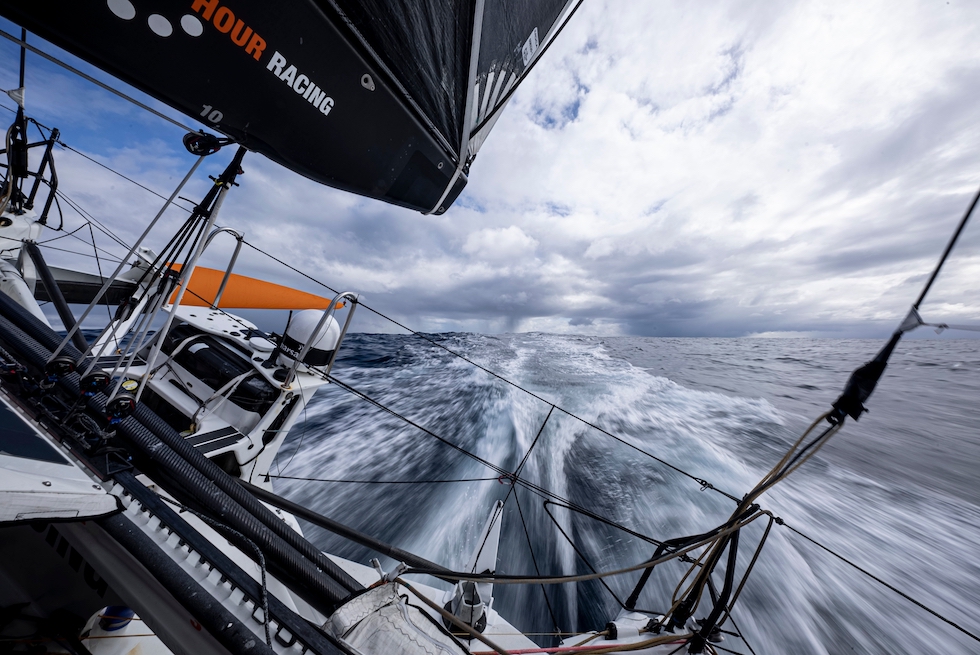
(Amory Ross/11th Hour Racing/The Ocean Race)
Despite the many problems, Team Malizia, whose skipper is the German Boris Herrmann, has nevertheless passed Cape Horn first of all, 27 days and 17 hours after leaving the Cape of Good Hope, in South Africa. So he won the Trofeo Roaring Forties, assigned to the fastest boat in crossing the so-called “roaring forties”, so called due to the difficulties encountered while sailing beyond the 40th parallel south. It is made from a piece of broken tree and represents an albatross flying over troubled waters.
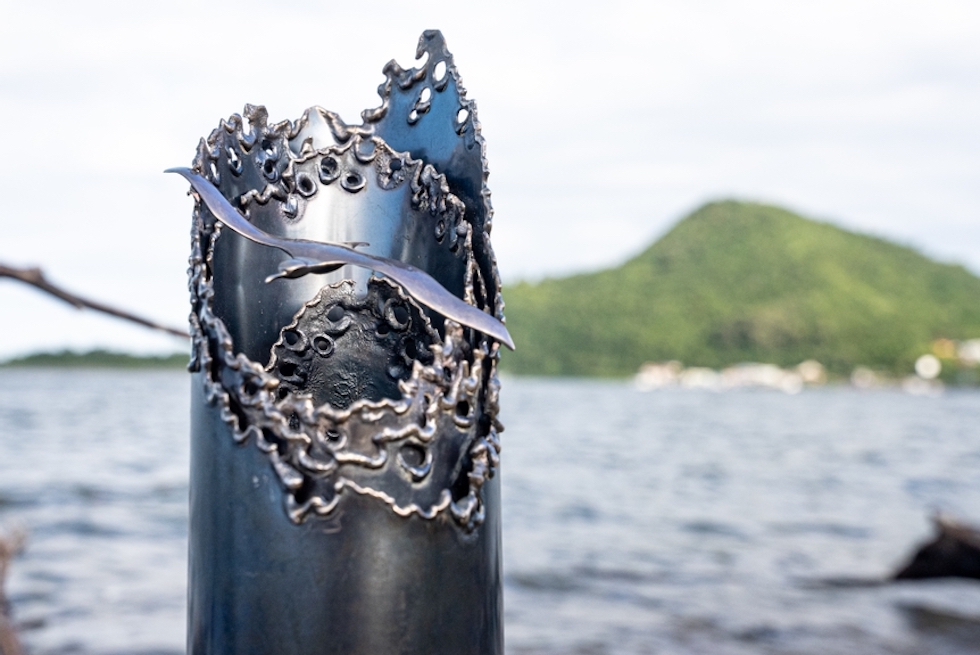
(Sebastian Pinkham/The Ocean Race)
“A brief moment in the gray south,” said Herrmann after passing the Cape: “The Horn was beautiful and after a few minutes it disappeared again into the gray mist.”
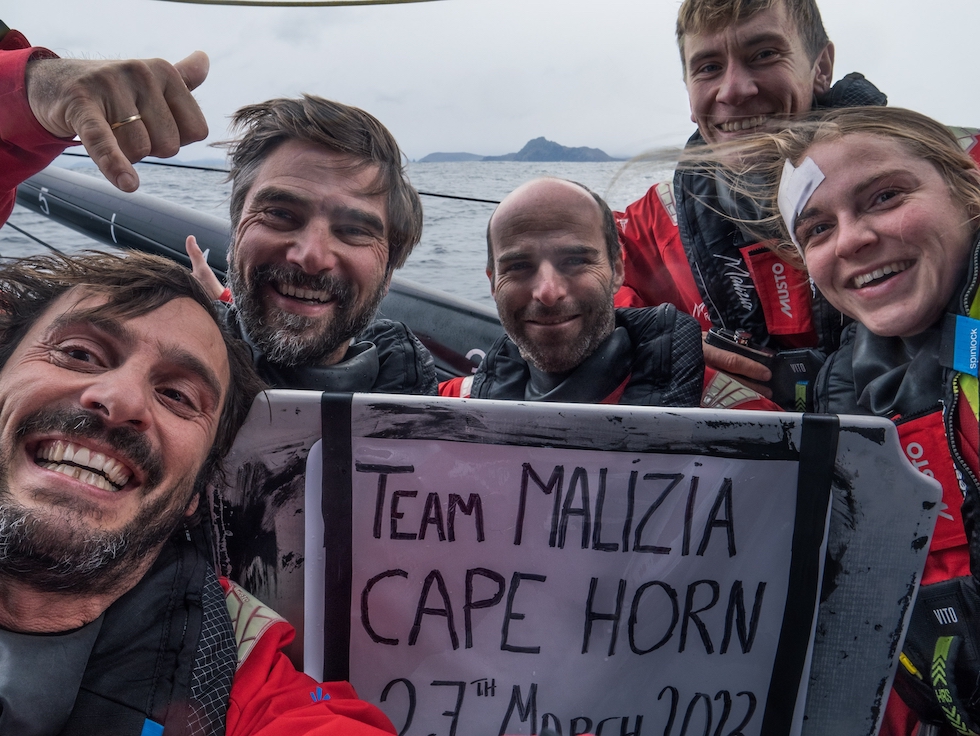
(Antoine Auriol/Team Malizia/The Ocean Race)
Cape Horn is the final obstacle of a complicated and long navigation without ever seeing land, that’s the point score “the end of Southern conditions, where deep low pressure systems follow one after another, unimpeded by land masses, with gale-force winds creating massive and fearsome seas.” At Cape Horn the winds change, the depths change, the waves rise and the dangers grow.

(Ronan Gladu/Biotherm/The Ocean Race)
Cape Horn was rounded for the first time in 1616 and is so called in reference to Hoorn, the Dutch city of which those who rounded it were originally from. It is the southernmost rocky promontory of Hornos Island, which is part of the archipelago of Tierra del Fuego. It is not really the southernmost point of South America (which is instead in the Diego Ramírez Islands), but it is nevertheless the point of reference for that historic naval passage, which for over a century has lost commercial importance due to the opening of the Panama Canal but which maintains the sailing one. Many sailors died in those waters from shipwrecks and sinking and those who managed to cross it are known as cape horner.
L’Ocean Race he wrote that «the passage of Cape Horn is a fundamental moment in the life of an ocean racer and an experience that sailors never forget. Lucky sailors who round the Horn in daylight and in good weather may see the small, rather ominous, rocky islet. Those rounding it at night will have to be content with glimpsing the lighthouse on Homos Island or, in bad weather, not seeing the most famous landmark of ocean racing at all.”
After rounding Cape Horn the four boats in the race now more or less proceeding in pairs, with the first two that are a handful of miles from each other and a few hundred kilometers ahead of the second two: all the crews have however chosen to go north, remaining west of the Falkland Islands (or Malvinas), thus proceeding closer to the South American coast. “It’s often thought that once you’ve passed Cape Horn things get easier,” said Ocean Race weather expert Christian Dumard: “But that hasn’t happened yet.”

(Amory Ross/11th Hour Racing/The Ocean Race)
From Itajaì, a large port city in southern Brazil where the arrival is scheduled for Sunday, the Ocean Race will restart on April 23rd, after a few days of break which will serve to put both the boats and their respective crews back in order.
– Read also: A running race that very few finish
